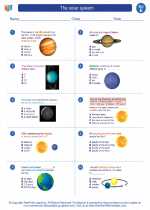Abiotic Factors
Abiotic factors are the non-living components of an ecosystem that can influence the living organisms within it. These factors can include physical components such as temperature, water, sunlight, soil, and air, as well as chemical components such as pH, salinity, and nutrient levels. Abiotic factors play a crucial role in shaping the structure and function of ecosystems and can have a significant impact on the distribution and abundance of organisms.
Types of Abiotic Factors
There are several types of abiotic factors that can impact an ecosystem:
- Temperature: The average temperature of an area can affect the metabolic rates and behavior of organisms.
- Water: Availability of water is essential for the survival of organisms, and its presence or absence can greatly impact an ecosystem.
- Sunlight: Sunlight is necessary for photosynthesis in plants and can influence the overall productivity of an ecosystem.
- Soil: The composition and properties of soil, such as texture, pH, and nutrient levels, can affect the types of plants that can grow in an area.
- Air: The composition of air, including oxygen, carbon dioxide, and pollutants, can impact the respiratory systems of organisms.
- pH: The pH of soil or water can influence the survival and growth of organisms, particularly those with specific pH requirements.
- Salinity: The salt concentration in water can affect the types of organisms that can thrive in aquatic environments.
- Nutrient Levels: The availability of nutrients such as nitrogen, phosphorus, and potassium can impact the growth and reproduction of plants and the organisms that depend on them.
Impact on Ecosystems
Abiotic factors can have a profound impact on the structure and function of ecosystems. For example, extreme temperatures can limit the range of certain species, while water availability can determine the types of plants and animals that can survive in a particular habitat. Changes in abiotic factors, whether natural or human-induced, can lead to shifts in ecosystems and the populations of organisms within them.
Study Guide
When studying abiotic factors, it's important to understand the following key points:
- The definition of abiotic factors and their role in ecosystems.
- The different types of abiotic factors and how they can influence living organisms.
- The ways in which abiotic factors can impact the distribution and abundance of species within an ecosystem.
- The importance of maintaining a balance of abiotic factors for the health and stability of ecosystems.
- The potential effects of changes in abiotic factors due to natural processes or human activities.
Understanding abiotic factors is essential for comprehending the complexities of ecosystems and the interconnectedness of living and non-living components within them.
.◂Science Worksheets and Study Guides Fifth Grade. The solar system

 Worksheet/Answer key
Worksheet/Answer key
 Worksheet/Answer key
Worksheet/Answer key
 Worksheet/Answer key
Worksheet/Answer key
 Vocabulary/Answer key
Vocabulary/Answer key
 Vocabulary/Answer key
Vocabulary/Answer key
 Vocabulary/Answer key
Vocabulary/Answer key
